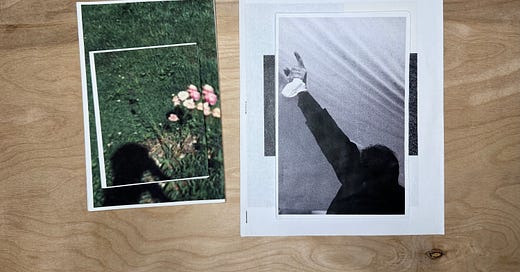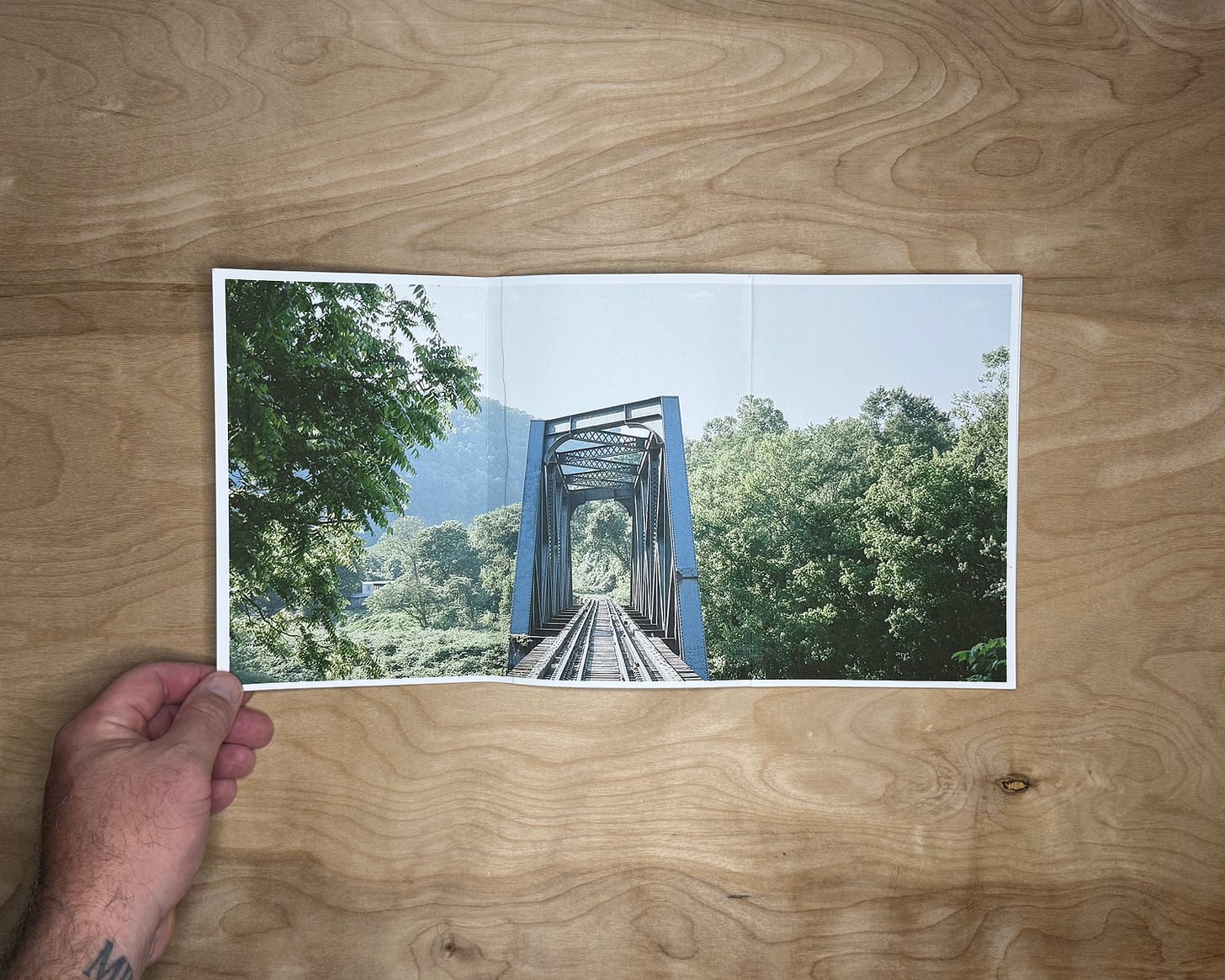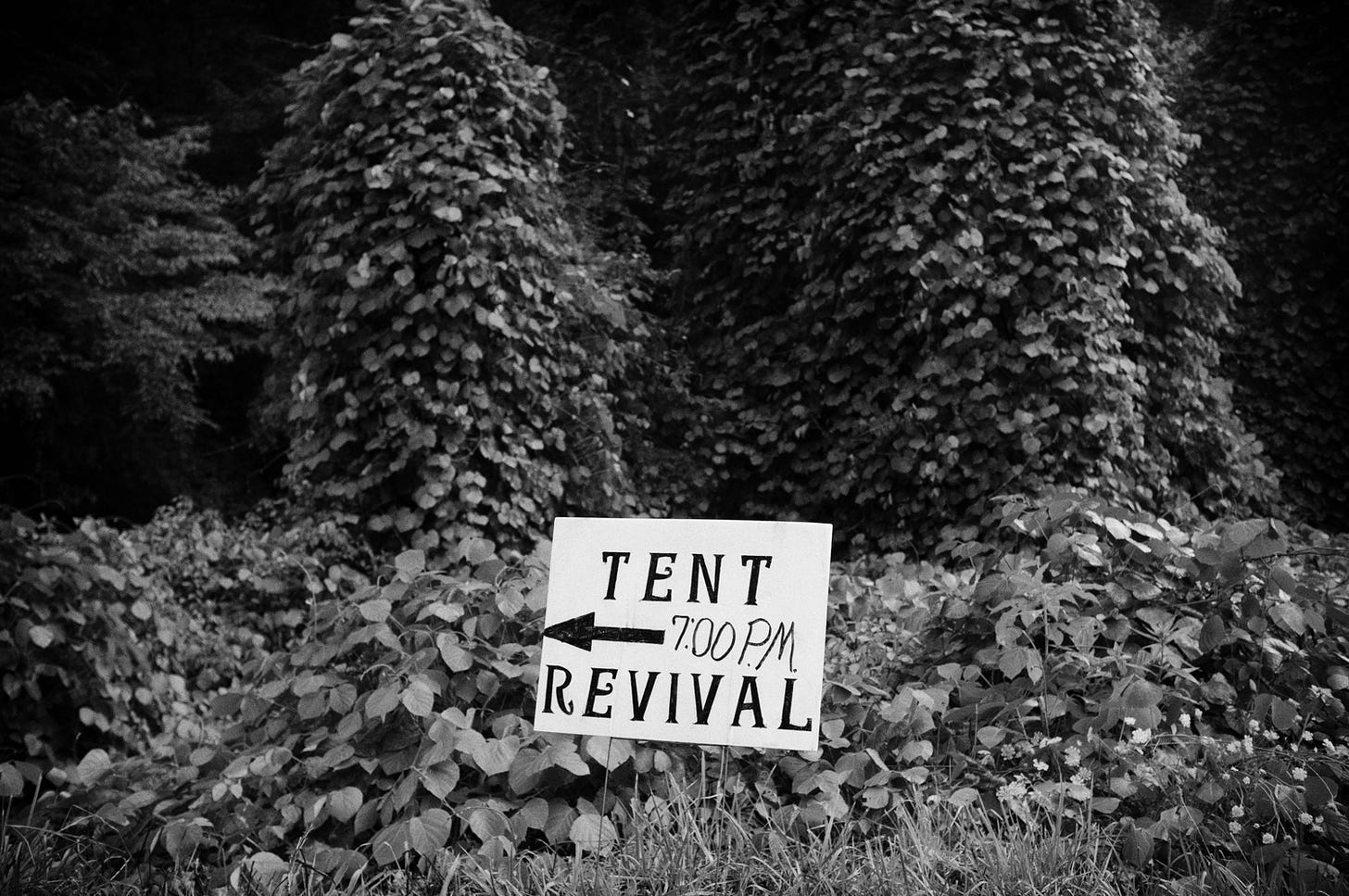Recently, I was shuffling through a box of work looking for notes about the Kentucky photographs of William Gedney (which, dear reader, I will write about in a future newsletter) when I came across these maquettes I made some time ago. Seeing these took me back to not only when I made the photographs, but the specific feelings of joy and exploration when thinking about how the pictures could be sequenced, paced, and arranged on paper.
I enjoy the tactility of things, especially photographs and photobooks. When I made these maquettes, I enjoyed the process as much as I did when I was in the field making the pictures. While it engaged a different part of my creativity, it resulted in the act of making something that did not exist before.
I made two versions of books from two different bodies of work: one from a series of pictures centered on Mingo County, West Virginia made primarily with a three-dollar point and shoot camera I bought at a thrift store and mixed with family photographs and the other from a series of pictures I made while visiting tent revivals in Kentucky and West Virginia.
The process didn’t require expensive tools. These were all made with a combination of color laser jet prints (read color copy machine), matte paper, and an inkjet printer. Once I figured out a sequence I wanted to try after moving around the printed sheets, I used a glue stick to glue the pages together and a bone folder to fold the pages.
I experimented with different sizes, formats, and gatefolds, which was just plain fun.
I really don’t make much black and white work. I much prefer color (no shade to the black and white practitioners out there). When I worked on making pictures of the tent revival series, Glory, I noticed a lot of competing color temperatures from multiple lights sources, which I felt really detracted from the energy of the pictures. Converting the files to black and white was as much a practical choice as it was an aesthetic one.
I think the black and white files, even on low-quality paper from a laser jet printer, evoke much more of the feeling of being there and being caught up in the charged atmosphere of a tent revival experience. I made two different maquettes of this body of work, finding that I liked them each for different reasons.
The smaller maquette offered an opportunity to experiment with gatefolds, which I really enjoy. Like, left unchecked, I will gatefold the hell out of a book dummy. It feels like finding a treasure map hidden among the pages.
The larger version (below), was designed using Blurb and offered a more traditional design layout. The margins left some space for me to insert notes and reflections in the editing process. Looking back on these after so much time has passed, I’m so glad I made these.
I’m a firm believer in printing work and experimenting with the many different forms that it can occupy. I’d encourage you to try the very simple process of laser jet printing and making a maquette using a glue stick, staples, or binder clips. Take a chance and see what magic you’re rewarded with.
I’m entrenched in Irene McKinney’s Unthinkable: Selected Poems 1976-2004.
I’m listening to a variety of John Prine songs.
I watched a big limb fall from a red oak tree.
I’ll have some more photobooks recommendations soon.
Thanks for reading my newsletter!
As you might imagine, it takes time and resources to write, edit, and publish this weekly newsletter. Your financial support here will go directly toward funding two projects I’m currently working on, which I’ll share more about later.
You can see more of my work at my website and follow me on Instagram.
Roger










your voice reminds me that I should get back to making(besides cooking)
I love these.